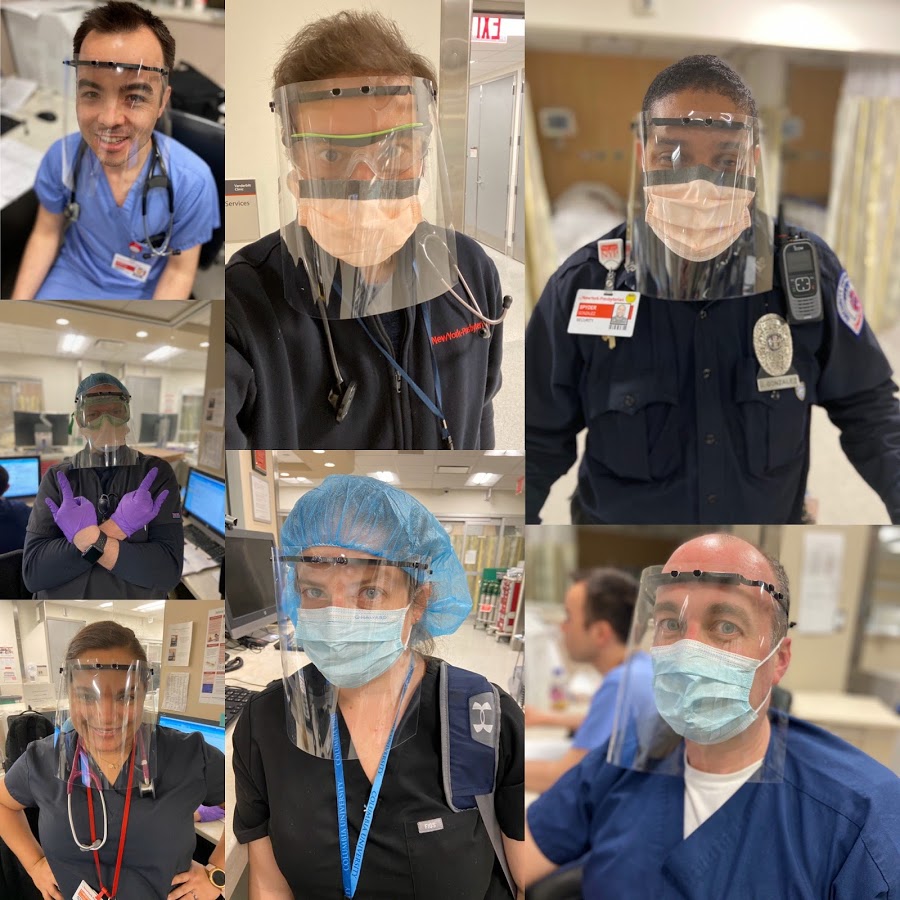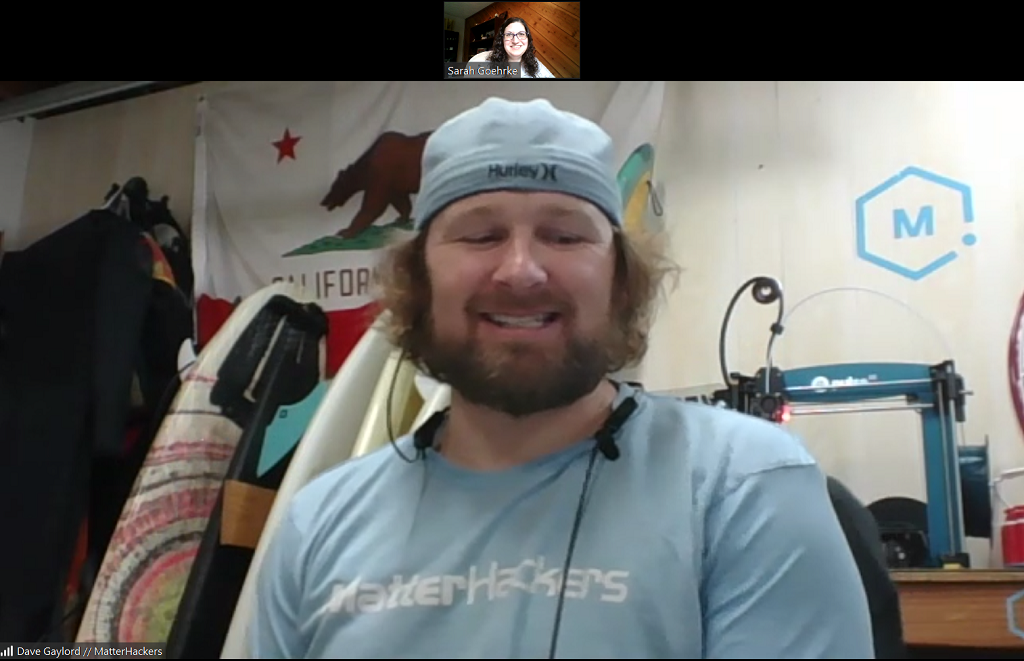
One Californian company has been using its deep-seated desktop 3D printing expertise to broaden maker response to COVID-19.
MatterHackers has an interesting take on making; on their website they explain: “we wanted to make the process of digital fabrication more accessible, giving educators, engineers, manufacturers, small businesses and tinkerers the power to make anything.”
Sometimes “making anything” includes the unexpected. Like many digital fabrication operations these strange days, MatterHackers has found COVID-19 response is keeping them very busy, making personal protective equipment (PPE) as well as mobilizing efforts to make and deliver PPE to medical personnel.
I caught up with Dave Gaylord, Product Operations and Director of Marketing, for a look into COVID-19 response as well as how things are overall looking at MatterHackers these days.
COVID-19 Maker Response Hub
“We’ve been crazy,” Gaylord opened our conversation with a laugh.
In an industry where “busy is good” is often heard bandied about under normal circumstances by often over-busy operations, “crazy” is the next level. MatterHackers is working to fulfill daily orders, which are still coming in — “That’s still really great, you can tell professionals and makers are busy at work,” Gaylord noted — as well as working themselves to coordinate pandemic response.
“Everyone is trying to create PPE right now and be heroes. In this short window, 3D printing will never be looked at the same way again. In this little short time before traditional manufacturing could pick up, 3D printing could deliver on day one,” Gaylord said. “This is on top of fulfilling orders out of both our warehouses, which is a full-time job. We have almost another business with the hub.”
MatterHackers launched the COVID-19 Maker Response Hub quickly in response to demand for 3D printed PPE. Understanding the need for a coordinated response to connect those who can make PPE with those who need PPE is necessary, MatterHackers stepped up to the plate. The teams are “working as locally as they can,” as “tens of thousands of 3D printers” have been deployed from the “thousands signed up” to help.
Gaylord noted that Director of Business Development Mara Hitner and her team have been hard at work making these connections to ensure localized help can be deployed.
“Myself, I have a medical device engineering background, so I have my 3D printing and my medical worlds colliding,” Gaylord continued. “It’s strange to say, but I do feel like 3D printing was made for this. We’ve been making Benchies and 3D Phils and Yoda heads until we could build something that everybody really freaking needed, and PPE is that.
“Now everyone is coming together saying, ‘I can make that.’ We’re able to say, ‘Okay, make that and send it here,’ and choreograph that. So many activities are happening locally, so many are making for their own medical facilities, and MatterHackers saw the opportunity to say that if you don’t know where to send this, or know how to communicate with hospitals or have a nurse friend who needs PPE, reach out to us and we’ll coordinate with your local hospital.”
While MatterHackers itself is based in southern California, those connections are spanning the US.
“We have a rolodex of people; we can say here’s someone in NYC and they need 10,000 units there, here’s someone in LA, we need 3,000 of this unit there. The national response has gone up, and we’re printing face shields and distributing them in packs of 200 across the nation, going to a lot of places we know are hotspots for COVID-19. It really feels like a little startup within MatterHackers. It’s been very time-consuming and very, very fulfilling. The response I’ve seen from this community makes me so proud to be a member of this community.”
Gaylord’s medical background — he was previously an R&D medical device engineer and a design engineer — is certainly serving him well at this point as MatterHackers continues to speed into action.
“I spent all last week reading FDA guidelines about emergency use considerations for face shields: how to clean them, how to sanitize them, how to use them. I did all that for 10 years,” he said.
It’s certainly a comfort to know that 3D printing response to COVID-19 has leadership experienced in both the medical and the fabrication needs. Tying both together, along with coordinating deployments and appropriate delivery, is critical to providing truly safe, effective solutions.
As for the Response Hub, the numbers for PPE made are already well out of date since our conversation. As of the time of writing, MatterHackers has seen 62,940 3D printed units of PPE delivered, serving 181 hospitals.
“Traditional manufacturing is starting to keep up,” Gaylord added.
“Every day is different, and we learn something different every day. The last few days, we’ve been talking to fewer hospitals and more ophthalmologists and dentists, who are very important on the frontlines — but not to ICUs, which was the first three weeks.”
MatterHackers Updates

That’s one area of updates — but aside from that business-within-a-business, how is business at MatterHackers itself?
Busy, again, of course. Despite business impacts from COVID-19, the company has been up and running, fulfilling orders every day.
When we spoke in late April, they’d also just gone through a move into a new warehouse, which took place over the early days of shut downs.
“We’d been renting three warehouses here in southern California, and now that’s consolidated into one huge spot. There’s still a lot of business, huge activity; it’s a testament to 3D printing growing in general. We’re making sure everyone who wants materials, hardware, and equipment is able to get that quickly and from one source,” Gaylord said.
Beyond that move, MatterHackers also remains focused on new materials as 3D printing continues to mature. BASF Ultrafuse is among these materials catching a lot of attention.
“That material is a huge step forward in how capabilities of 3D printing will be perceived,” Gaylord noted. “Internally, we’ve been doing a lot more testing: strength, mechanical, flex testing, and more, and having more conversations around technical big issues. What fresh customers are looking for, what new users of 3D printers are looking to get, are specific technical capabilities for end-use parts.”
That theme is playing out across the 3D printing board, and Gaylord really nailed it with this observation:
“This question is a historical relic now: ‘You have a 3D printer at home, what are you going to do with that?’
“No one’s going to ask that ever again. It’s become so obvious how these can be used, how they can fill the gap. Someone who’s technically minded will never not understand again where 3D printing fits into a use case.”
MatterHackers is seeing first-hand the maturing of 3D printing users, as “people are ordering PETG in really boring colors, no more rainbows.” Hobbyists will always be a part of the desktop 3D printer market, but the faster-growing segment of users are professionals — those “boring” colors represent professional usage, and that’s a great sign for this industry.
“We know how important it is to supply what people need to be part of the solution. Desktop 3D printing is specifically seeing this uptick right now,” Gaylord said. “We can’t plan for this trajectory to continue; it will fall in line with the economy as traditional manufacturing picks up, so we also have to be prepared for that.”
Closing out our conversation on this realistic look at the near- and longer-term future for desktop 3D printing as it has taken its place in pandemic response, stop-gap supply, and increasing professional use seemed the right note to reality check where digital fabrication fits in to the manufacturing scene in mid-2020.
Via MatterHackers
